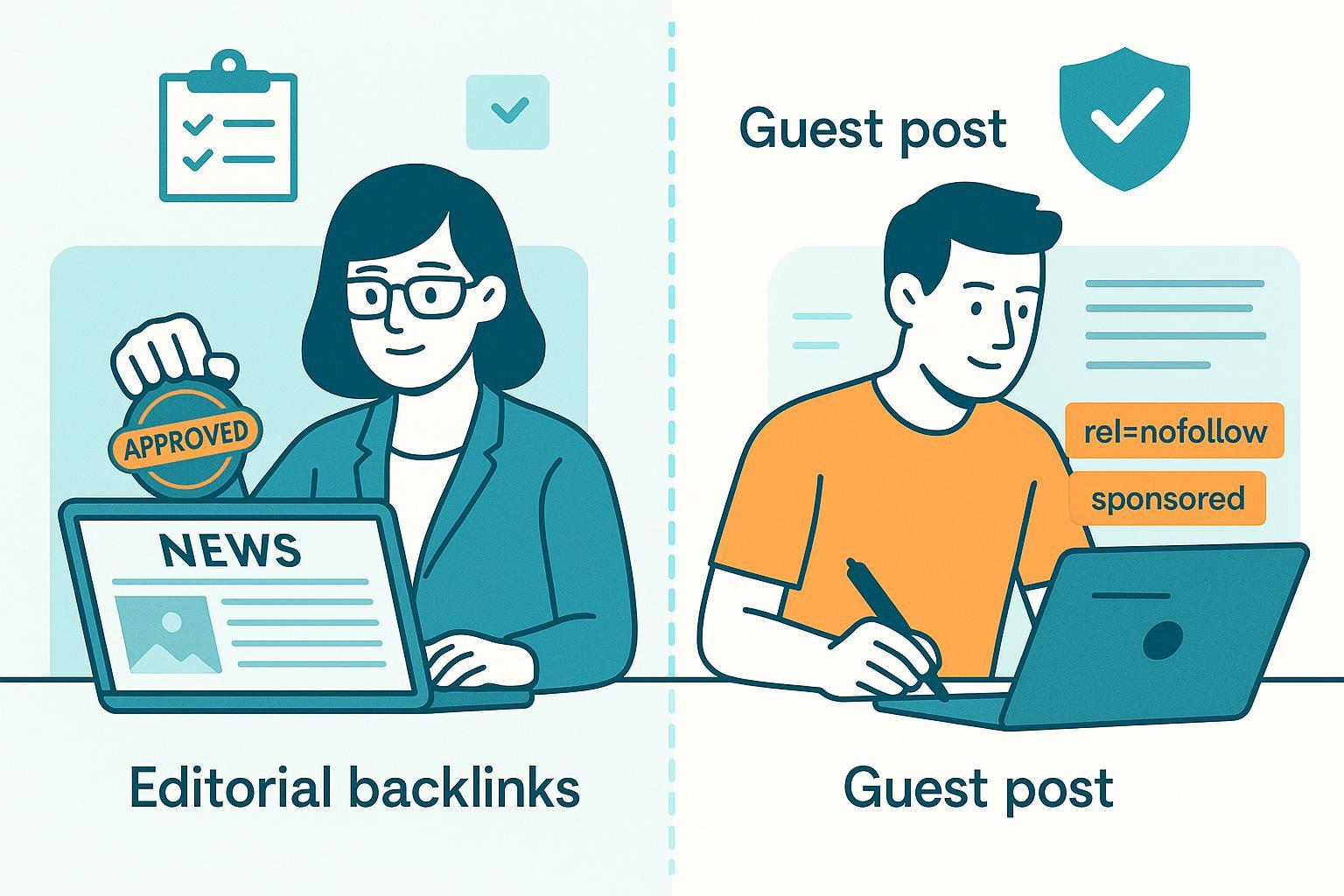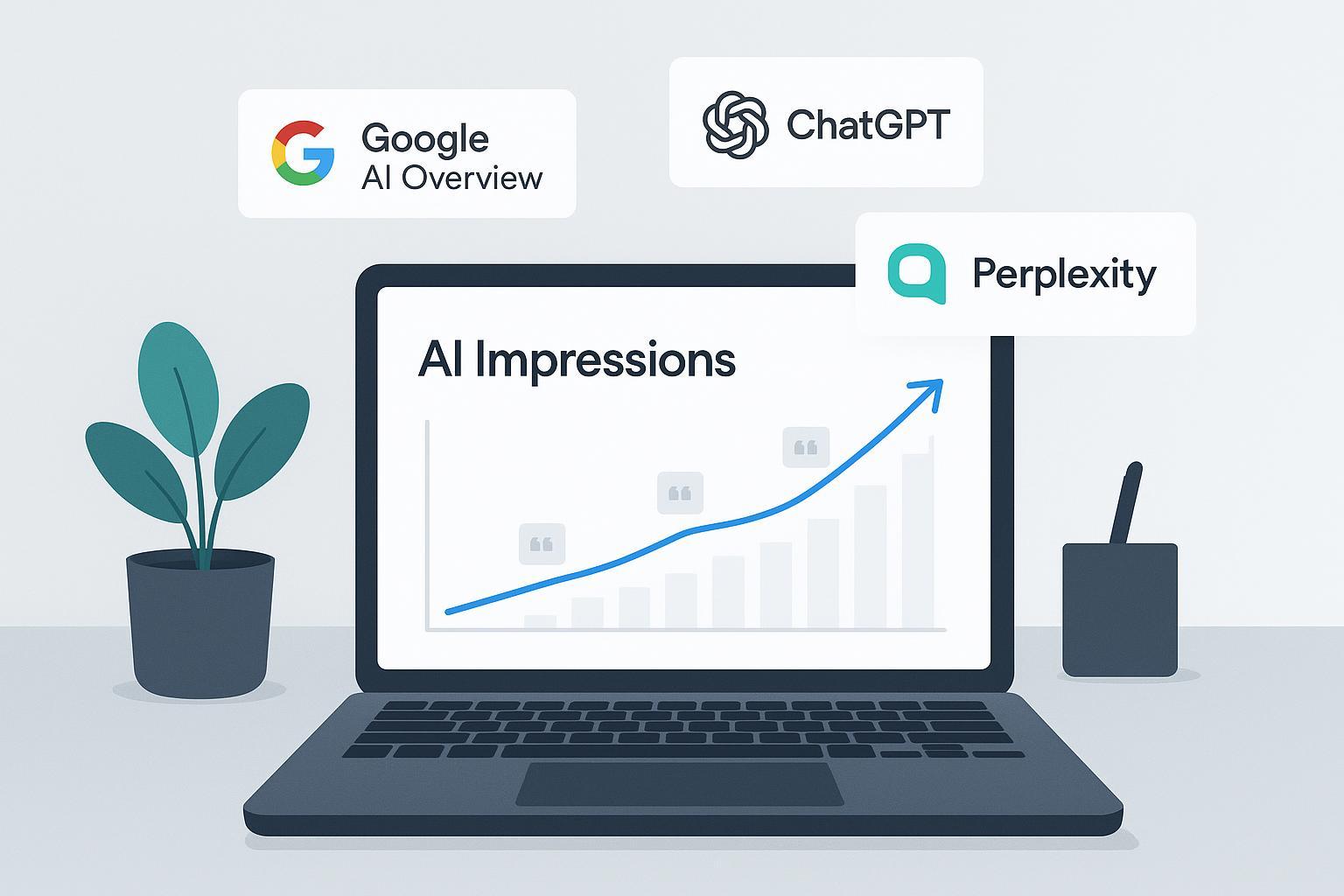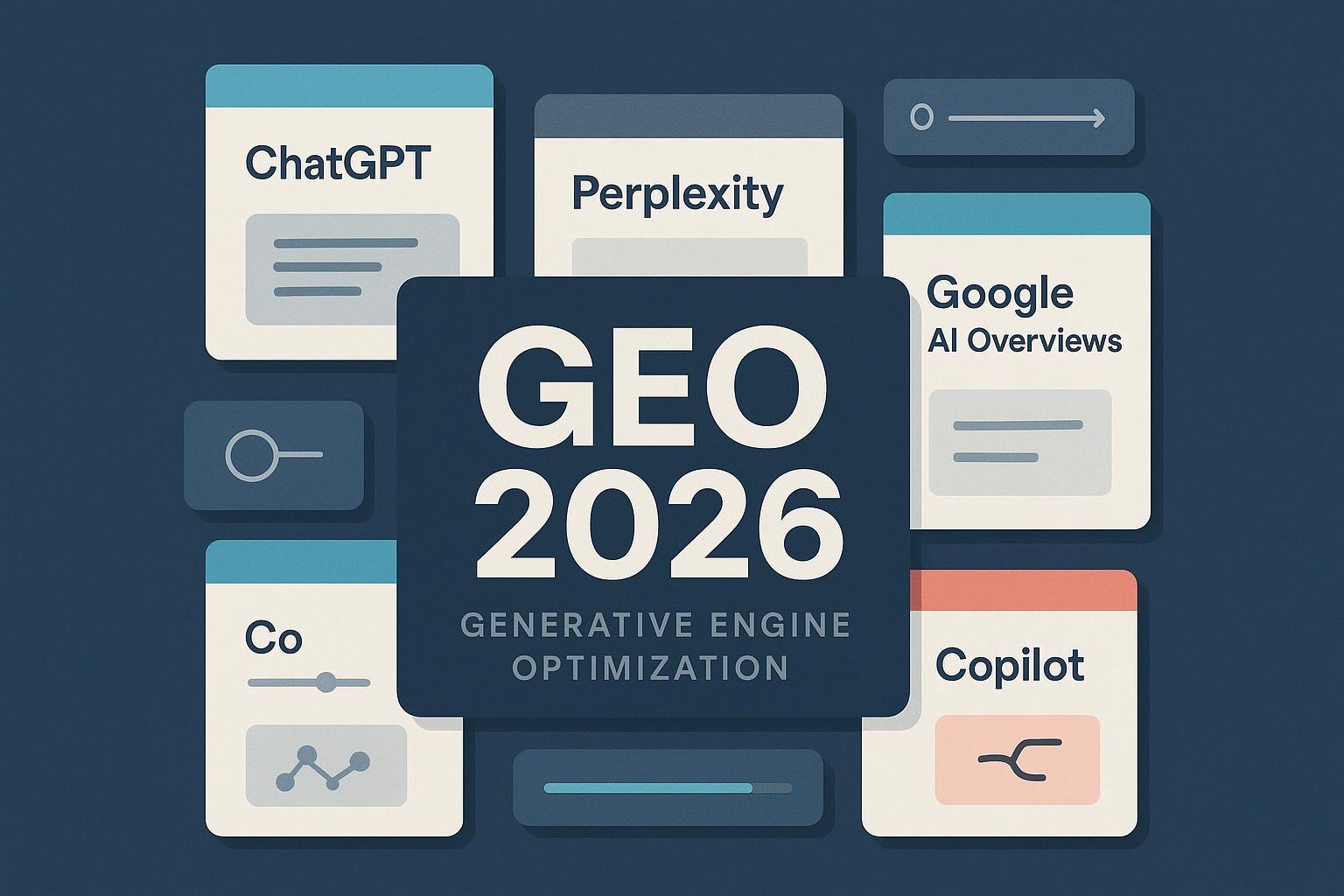Editorial News Backlinks vs Guest Posting (2025): SEO Rankings Guide
Compare editorial news backlinks vs guest posting backlinks for SEO in 2025. See policy compliance, risk, authority signals, traffic, and best link-building scenarios.


Google’s 2024–2025 policy updates changed the link‑building landscape in practical ways. If your team still treats guest posting as the primary path to authority, it’s time to reassess. In this analysis, we compare editorial backlinks from reputable news sources with guest posting links—through the lens of compliance, risk, and real‑world impact—so you can choose the mix that fits your brand, budget, and timeline.
What Changed Since 2024–2025 (and Why It Matters)
Two shifts should be on every SEO roadmap:
- Enforcement tightened. According to the Google Product Blog announcement (March 2024), the core and spam updates aimed to reduce low‑quality content in Search—Google later noted a roughly 45% reduction during the 2024 rollout. Paired with spam policy additions, this raised the bar for manipulative practices.
- Policies got sharper. Google’s Spam Policies for Web Search (continuously updated; relevant 2024–2025) explicitly target link schemes and instruct site owners to qualify paid links. In November 2024, Google clarified the site reputation abuse policy, warning that publishing third‑party content to exploit a host site’s authority can trigger enforcement. And the August 2025 spam update completion highlighted ongoing efforts to apply these policies at scale.
Bottom line: tactics that look like PageRank manipulation—especially paid placements, scaled guest posts with optimized anchors, or low‑relevance sites—carry higher risk and lower ROI than they used to. Editorially earned citations in reputable media align more cleanly with policy and trust signals.
Definitions: Editorial News Links vs Guest Posting Links
- Editorial backlinks (news sources): Links that journalists or editors place because your brand, data, or expert insight is relevant to a story. You don’t control the anchor text or placement; the publisher chooses whether to link and how.
- Guest posting backlinks: Links you add within articles you author for other sites. Control is higher (topic, anchor, placement), but so is policy scrutiny—especially if any compensation changes hands or the content’s primary purpose is link placement.
Link attributes and compliance basics
If there is compensation or sponsorship involved, Google expects link qualification. See Links best practices for the intent behind rel attributes.
| Link attribute | Typical use case | Passes PageRank? | Compliance notes |
|---|---|---|---|
| rel="dofollow" (standard link) | Editorial citations; natural references | Yes | Safe when editorially earned and relevant. Avoid manipulative anchors or quid‑pro‑quo exchanges. |
| rel="nofollow" | Untrusted or non‑endorsed references; many directories | Generally no | Appropriate for links you don’t want to endorse. Required for many paid placements if not using "sponsored." |
| rel="sponsored" | Paid placements, sponsorships, affiliate links | No | Required to qualify paid links; Google’s Spam Policies (2024–2025) emphasize qualifying paid links. |
| rel="ugc" | User‑generated content (comments, forums) | Generally no | Use when links are placed by users; can be combined with nofollow. |
Google’s official guidance states that paid links aren’t a violation if they’re properly qualified (rel="nofollow" or rel="sponsored"). See the current wording on Spam Policies for Web Search.
Head‑to‑Head: What Matters Most in 2025
Editorial control and endorsement
- Editorial news links: Strong signal of third‑party endorsement. You’re cited for something genuinely useful—data, expertise, or newsworthiness.
- Guest posting: You control the content, but endorsement is weaker. If links look self‑serving (especially exact‑match anchors), they’re more likely to be discounted or risky.
Policy compliance and risk
- Editorial news links: Low risk when earned naturally without compensation; usually standard dofollow unless the publisher has a blanket nofollow policy.
- Guest posting: Medium to high risk when scaled, irrelevant, paid, or anchor‑optimized. If any money changes hands, qualify links with rel="sponsored" or rel="nofollow" per the Spam Policies (Google, 2024–2025). Publishing third‑party content primarily to leverage a site’s authority can run afoul of the site reputation abuse policy (Nov 2024).
E‑E‑A‑T and perceived authority
- Editorial news links: Often contribute to Expertise, Experience, Authoritativeness, and Trust by associating your brand with reputable publications.
- Guest posting: Can build author reputation in niche communities, but E‑E‑A‑T gains depend heavily on host site quality and editorial standards.
For a deeper primer on building authority under current updates, see Building Content Authority for Google’s 2025 Update.
Referral traffic and brand effects
- Editorial news links: Can drive meaningful referral traffic from broad, highly engaged audiences. Brand lift from credible press mentions is real—even when the SEO impact is indirect.
- Guest posting: Traffic depends on the host’s audience and how prominently your content is promoted. Results vary widely.
Cost, scalability, and timelines
- Editorial news links: Requires PR or content assets (original data, expert commentary), story development, and pitching. Budgets vary by scope, but the payoff includes both SEO and brand benefits.
- Guest posting: Faster to scale via outreach or vendors, but costs add up. BuzzStream’s link building pricing (2025) shows mid‑hundreds per paid placement on average (with “premium” sites costing more), and quality is uneven.
BuzzStream’s link building statistics (2025) also highlight marketplace quality issues—many sites offer placements with weak editorial standards, raising both compliance risk and the odds of links being ignored.
Where Guest Posting Still Makes Sense (Done Right)
Guest posting isn’t dead; it’s contextual.
- Editorial standards: Contribute to reputable, topic‑relevant sites with strong editorial oversight. Avoid low‑quality marketplaces.
- Audience value first: Write genuinely useful, original pieces for the host’s audience; treat any link as secondary.
- Anchors and placement: Favor branded or natural anchors; avoid exact‑match keywords in body copy. If there is sponsorship or payment, qualify links per Google’s Spam Policies (2024–2025).
- Contributor programs: Many publications have expert contributor programs—these can build reputation when content is high quality and independent of link placement.
If you use paid vendors or marketplaces, understand legal and compliance contexts and when to use rel="sponsored"/nofollow. For a plain‑English overview, see Buying Backlinks vs. Organic Link Building: Legal Implications.
Why Editorial News Links Tend to Win in 2025
- Alignment with policy: Journalistic citations naturally fit Google’s stance on link schemes. The March 2024 updates prioritized reducing low‑quality content, as summarized in the Google Product Blog (2024), and the August 2025 spam update completion suggests continued enforcement.
- Stronger trust signals: Reputable media coverage enhances perceived authority across audiences and algorithms.
- Diversified impact: Beyond rankings, editorial coverage drives referral traffic, social proof, and future linking opportunities as other sites cite the same story.
Practical Playbook: Earning Editorial Links via Digital PR
-
Build a newsworthy asset
- Original data (surveys, platform usage insights)
- Expert analysis or commentary on timely trends
- Unique frameworks or tools that solve real problems
-
Map relevant journalists and beats
- Create a list of reporters covering your topic, and monitor their recent stories and angles.
-
Pitch with context and speed
- Short subject lines, value‑first summaries, and clear data points. Be available for rapid quotes.
-
Maintain ethical anchors
- Let journalists choose the wording; avoid pushing keyword anchors. Focus on clarity and usefulness.
-
Measure outcomes and iterate
- Track referring domains, assisted conversions, and visibility. For a structured metric, see Understanding How Search Visibility Score Is Calculated & Impacts SEO Performance.
Practical Playbook: Compliant Guest Posting
-
Select high‑quality, relevant hosts
- Vet editorial standards, traffic quality, and audience fit. Avoid sites primarily selling placements.
-
Write for the host’s audience
- Prioritize education and originality. Minimize self‑promotion.
-
Use safe link practices
- If compensated or sponsored, qualify links (rel="sponsored"/nofollow). Keep anchors natural.
-
Limit scale; diversify tactics
- Combine guest contributions with earned media, partnerships, and owned assets.
-
Operational tips
- Outreach can be time‑consuming. To streamline prospecting and content workflows, see practical ideas in AI‑Driven SEO Tips for Fiverr Gigs.
Scenario‑Based Recommendations
-
Early‑stage startups with limited budgets
- Focus on a few standout assets (e.g., proprietary data or expert guides) and pitch niche trade press. Layer in a small number of guest contributions to authoritative niche sites where audience overlap is high and compliance is straightforward.
-
Established brands seeking defensible authority
- Prioritize editorial citations from mainstream or top‑tier vertical media via ongoing digital PR. Use guest posts sparingly for thought leadership, qualifying any sponsored links.
-
Agencies managing multiple clients
- Build repeatable PR templates (data collection, commentary calendars, journalist lists). Offer guest contributions only to vetted publications with clear editorial standards; document rel handling and anchors in your workflow.
-
Product‑led companies with data assets
- Turn product telemetry into anonymized insights and publish periodic reports. Journalists often cite unique datasets, producing natural editorial links that compound over time.
Quick Compliance Refresher
- Paid or sponsored placements should use rel="sponsored" or rel="nofollow". See Google’s Spam Policies (2024–2025).
- Don’t exploit a host site’s authority with third‑party content aimed primarily at ranking. Google’s site reputation abuse clarification (Nov 2024) makes enforcement expectations clear.
- For outbound linking on your own site, ensure links are crawlable and use attributes correctly per Google’s links best practices.
Also Consider (Tools for Execution)
If you need help producing authoritative content assets, coordinating multilingual publishing, or streamlining SEO workflows, consider QuickCreator as a supporting platform. Disclosure: QuickCreator is our product.
Conclusion
Editorial backlinks from reputable news sources are not a silver bullet, but they align more naturally with Google’s 2024–2025 policy environment and deliver compound benefits—trust, referral traffic, and future link opportunities. Guest posting remains viable when it’s audience‑first, highly relevant, and fully compliant (with proper rel attributes for any sponsored placements). For most teams, the pragmatic strategy in 2025 is a balanced mix: prioritize digital PR and earned citations, use guest contributions selectively, and measure outcomes continuously to refine your approach.





